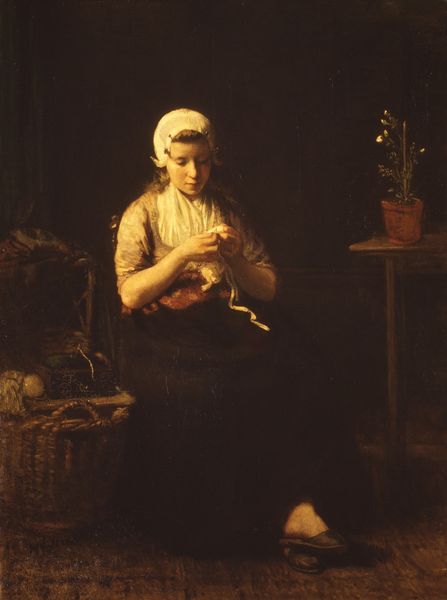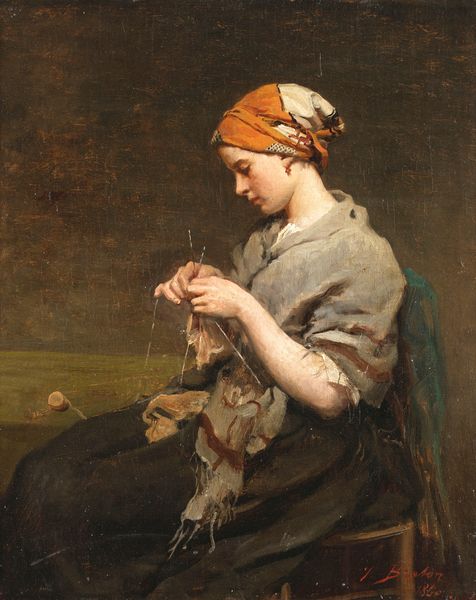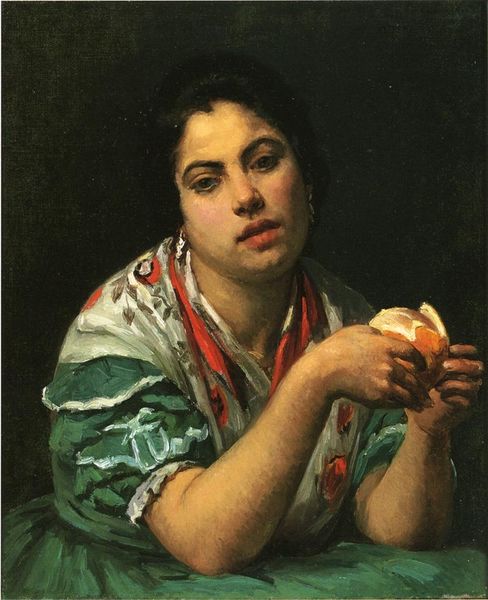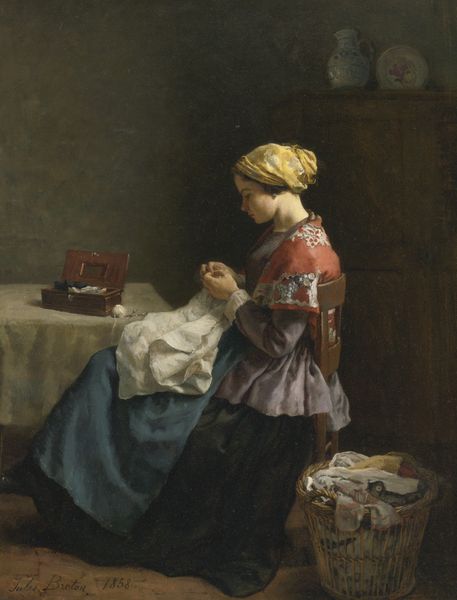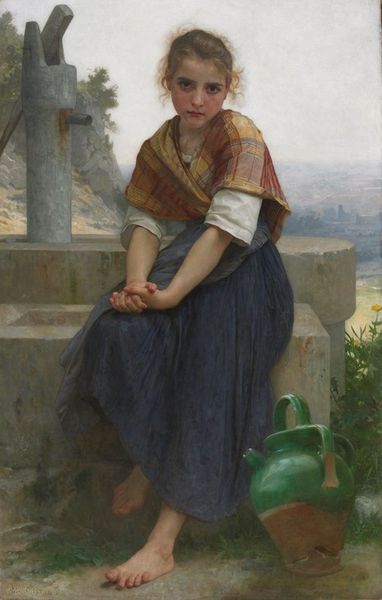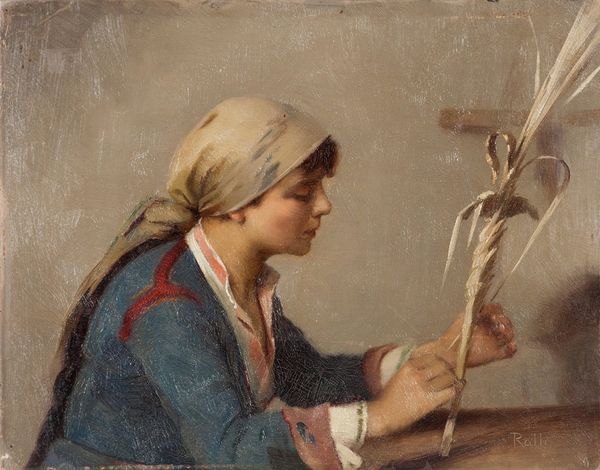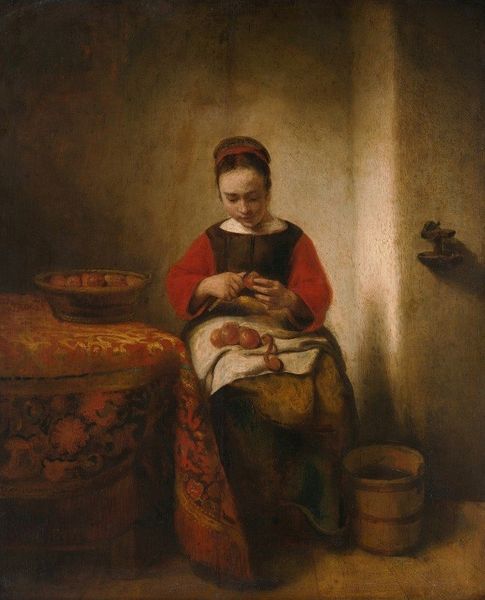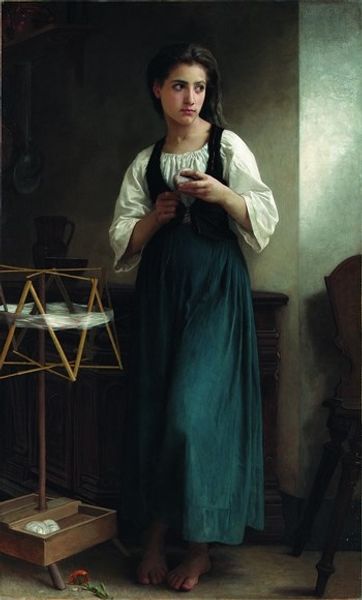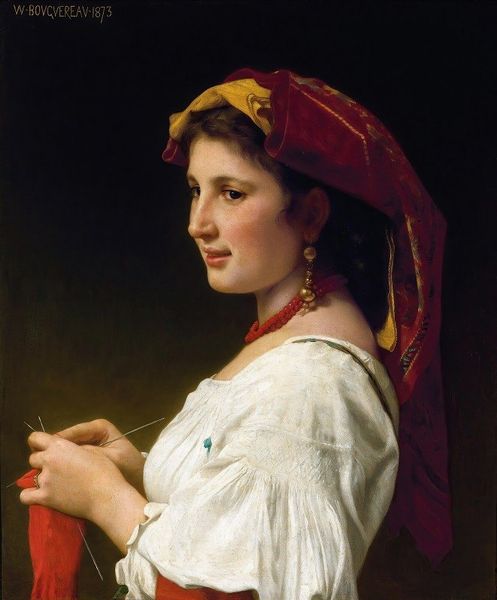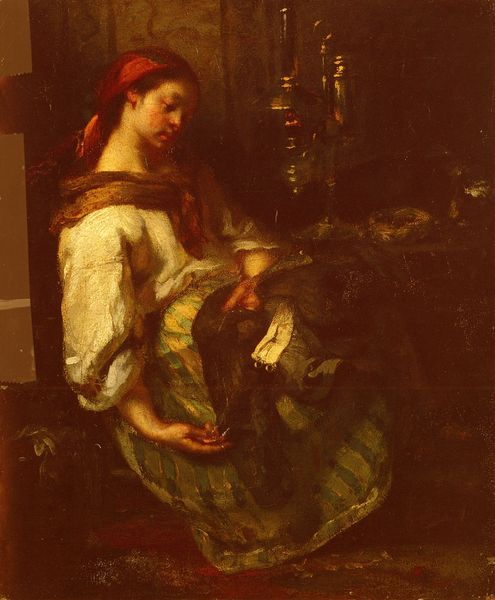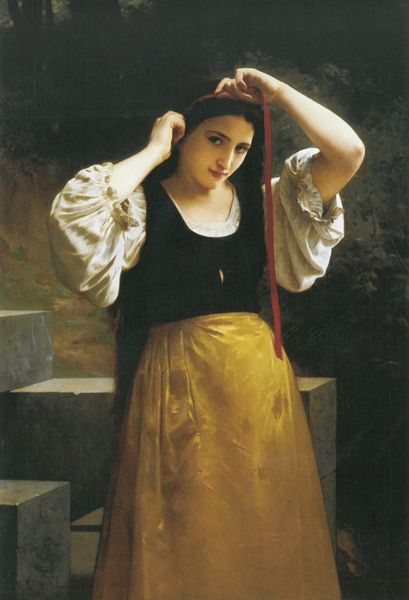
Dimensions: 28.5 x 41.2 cm
Copyright: Public domain
Editor: This is Jules Breton's "Peasant Woman Threading a Needle," painted in 1861. The muted tones and the subject's concentration give it such a quiet, contemplative feel. What do you see in this piece beyond the surface representation? Curator: Beyond the seemingly simple genre scene, I see a complex commentary on labor and gender in 19th-century rural France. Breton, whether consciously or not, presents us with the economic realities faced by women of this class. Notice how the act of mending – a repetitive, often invisible form of work – is elevated to the level of fine art. Doesn't this suggest a need to re-evaluate the value placed on different forms of labor, especially women's labor? Editor: That’s a perspective I hadn’t considered. I was focusing more on the technical skill, the way the light catches her face. Curator: Exactly, the play of light and shadow draws attention to her face, inviting us to contemplate her thoughts, her inner life. But also consider what it obscures – the hardships and limited opportunities afforded to women of her class. What might be the societal constraints present, but unseen in this seemingly placid painting? Editor: I guess I hadn’t thought about how the romantic aesthetic could also mask social issues. It makes me think about similar representations today. Curator: Precisely. Art often functions as a mirror, reflecting not only what is, but also what could be and perhaps, more importantly, what is actively being obscured. Examining the social and historical context of an artwork such as this encourages dialogue, not just on the artist's intentions, but the societal issues surrounding identity, labor, and gender. Editor: This really opens up a completely new way to read this kind of painting. It gives us so much to think about. Curator: Indeed. It highlights the potential for art to both reflect and challenge prevailing social norms and it challenges us to view them critically.
Comments
No comments
Be the first to comment and join the conversation on the ultimate creative platform.
